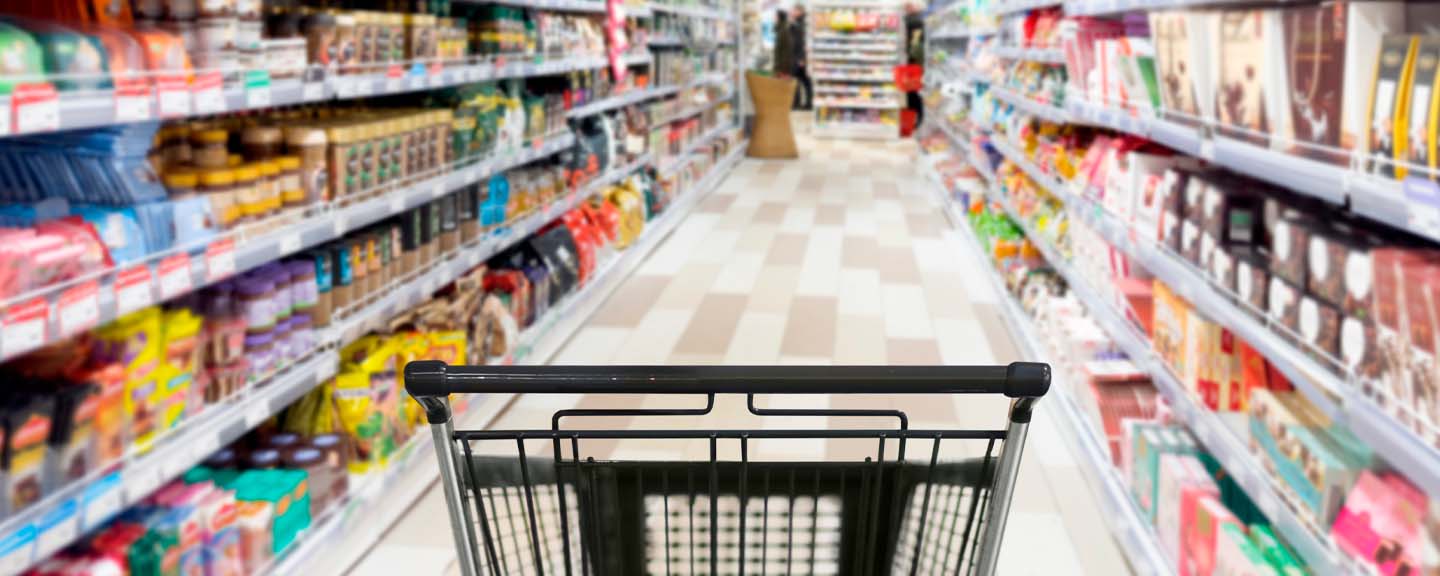 Business
AlphaSights: A Comprehensive Review for Companies and Experts
Business
AlphaSights: A Comprehensive Review for Companies and Experts
Fast-moving consumer goods (FMCG) include a diverse range of essential products that are distinguished by having large sales volumes, low unit prices, and quick inventory turnover.
These goods, which range from food and beverages to personal care products, form the foundation of daily consumer demands around the world.
For some time now, the FMCG market has been greatly impacted by numerous factors, including digital innovation, sustainability, healthy habits, and inflation.
With this in mind, understanding FMCG companies is quite challenging, but not impossible. As with any other company that wants to stay afloat, maintain customer loyalty, and grow, these firms also feel the need to optimize their marketing strategies, together with brand awareness.
Let’s explore the definition of FMCG, the market size, the largest companies, and the latest innovations that will shape the future of the sector.
Definition and characteristics of FMCG
FMCG is a category of products that have a number of characteristics, namely, they are sold at relatively low prices, and have short shelf lives due to either perishability or high consumer demand.
Both food and non-food categories are included in the FMCG's extensive product portfolio, including food and soft drinks, cleaning supplies, and toiletries.
Unlike durable goods like electronics, FMCG goods must be purchased frequently, so strong supply chains are essential to keep them consistently available.
Key characteristics of FMCG include:
- High volume, low margins: Profitability stems from scale rather than premium pricing.
- Consumer-centric focus: Convenience, sustainability, and health trends all affect demand.
- Supply chain efficiency: Extensive networks guarantee that goods are delivered to customers on time, reducing stockouts.
FMCG global market overview
Despite economic fluctuations, the global FMCG market has managed to demonstrate resilience, which has mostly been driven by several factors, including urbanization and e-commerce development.
In 2024, the market was estimated to be valued at US$12.9 trillion, with predictions indicating growth to US$21.8 trillion by 2034 at a compound annual growth rate (CAGR) of 5.4%, according to Expert Market Research.
Other projections indicate some fluctuations, with some forecasting a lower CAGR of 3.2 - 3.8% through 2029 to 2033, taking into account possible inflation and geopolitical effects such as tariffs.
Some FMCG market key drivers in a little more detail:
1. Urbanization and income growth
The global urban population is continually rising - from 3.6 billion in 2010 to 4.7 billion in 2024, according to the World Bank, indicating a growing demand for convenience products.
For instance, China, home to 940–960 million urban residents (more than India and the United States), saw its nationwide per capita disposable income rise 5.3% in 2024, with urban incomes up 4.6% and rural incomes up 6.6%, according to the National Bureau of Statistics of China.
2. E-Commerce and digitalization
Distribution channels such as supermarkets and online platforms are expanding, with e-commerce predicted to grow from US$6.5 trillion in 2024 to an incredible US$12.6 trillion by 2033, according to Business Wire.
3. Health and sustainability trends
Rising awareness is fueling demand for organic, clean-label, and eco-friendly products.
4. Regional dynamics
- Asia-Pacific tops the FMCG market with a 6.0% CAGR, fueled by markets such as India (6.1%) and China (6.0%).
- On the European FMCG market, companies are seeking faster, more precise consumer data to maneuver around inflation, supply interruptions, and changing consumer habits.
- In North America, due to rising customer demand for clean-label, plant-based, and allergy-free products, the FMCG market is changing quickly, with businesses investing in scalable, sustainable ingredient solutions.
Top FMCG companies worldwide
The leading companies in this market continue to hold their positions over time with the help of brand loyalty, constant innovation, and global supply chains.
These are the top 10 largest FMCG companies, based on market capitalization:
*It is important to note, however, that the exact rankings may vary slightly due to daily fluctuations.
# | Company | Headquarters | Market Cap (USD Billion) | Revenue (USD Billion, Latest FY) | Key Brands |
1 | Procter & Gamble (P&G) | Cincinnati, USA | 354.34 | 84.28 (2025) | Gillette, Pampers, Tide, Head & Shoulders |
2 | The Coca-Cola Company | Atlanta, USA | 294.54 | 47.06 (2025) | Coca-Cola, Fanta, Sprite, Minute Maid |
3 | Nestlé | Vevey, Switzerland | 272.93 | 101.54 (2024) | Nescafé, KitKat, Nespresso, Maggi |
4 | L'Oréal | Clichy, France | 244.05 | 45.25 (2024) | L’Oréal Paris, Garnier, Maybelline, NYX |
5 | PepsiCo | Purchase, USA | 201.66 | 91.74 (2025) | Pepsi, Lay's, Gatorade, Quaker |
6 | Unilever | London, UK | 158.29 | 65.7 (2025) | Dove, Knorr, Lipton, Ben & Jerry's |
7 | Mondelez International | Chicago, USA | 80.27 | 37.10 (2025) | Oreo, Cadbury, Toblerone, Ritz |
8 | Danone | Paris, France | 56.82 | 28.48 (2024) | Activia, Evian, Alpro, Nutricia |
9 | Kimberly-Clark | Dallas, USA | 43.06 | 18.88 (2025) | Huggies, Kleenex, Kotex, Depend |
10 | General Mills | Minneapolis, USA | 26.9 | 19.48 (2025) | Cheerios, Nature Valley, Betty Crocker |
The top three leading FMCG companies today
Let’s examine the top three companies in more detail:
Procter & Gamble (P&G)
- Headquarters: Cincinnati, Ohio, United States
- Market capitalization: US$354.34 billion (Source)
- Revenue in 2025: US$84.28 billion (Source)
This company was established in 1837 and today is a multinational corporation that produces and markets everyday essentials, boasting a global reach of over 180 countries.
Procter & Gamble specializes in a wide range of consumer products across numerous categories, including:
- Beauty (Pantene, Head & Shoulders)
- Grooming (Gillette)
- Fabric and home care (Tide, Dawn)
- Baby/feminine/family care (Pampers).
The company’s recent milestone:
Procter & Gamble started its multiyear collaboration with Microsoft in 2022. In 2025, it announced the integration of Microsoft Azure IoT Operations and Azure Arc, which allows P&G to connect data from its production plants in more than 35 countries. The technology integrates AI and hybrid cloud infrastructure to predict issues, improve product quality, and cut deployment times by up to 90%.
The Coca-Cola Company
- Headquarters: Atlanta, Georgia, United States
- Market capitalization: US$294.54 billion (Source)
- Revenue in 2025: US$47.06 billion (Source)
The company was established in 1886 and today is a multinational corporation that produces and markets beverages, boasting a global reach of over 190 countries.
The company specializes in a wide range of non-alcoholic and alcoholic beverages across numerous categories, including:
- Carbonated soft drinks (Coca-Cola, Sprite)
- Waters (Dasani)
- Juices and fruit drinks (Minute Maid)
- Sports and energy drinks (Powerade).
The company’s recent milestone:
The Coca-Cola Company announced a partnership with clean-tech startup Sparklo and Majid Al Futtaim (the operator of Carrefour retail stores) in 2025 to promote recycling through Coca-Cola Reverse Vending Machines (RVMs) in Carrefour stores across the UAE.
This initiative encourages customers to recycle plastic bottles and aluminum cans, supporting the UAE Circular Economy Policy 2031, which aims to divert 75% of waste from landfills by 2030. It is expected that over 1.8 million containers will be collected annually.
Nestlé S.A. (Nestlé)
- Headquarters: Vevey, Switzerland
- Market capitalization: US$272.93 billion (Source)
- Revenue in 2024: US$101.54 billion (Source)
Nestlé was founded in 1866 and today is the largest food company, working in around 190 countries. It is also the largest industrial company in its home country, Switzerland.
The company's portfolio features more than 2,000 food and beverage brands in various categories such as coffee, confectionery, dairy, pet food, and nutrition. Some of its most iconic brands are Nescafé, KitKat, Maggi, Nespresso, and Gerber.
The company’s recent milestone:
Nestlé has announced plans to streamline its global operations over the next two years. The move includes adopting more automation to enhance productivity. About 16,000 jobs will be affected worldwide, primarily in office-based functions. CEO Philipp Navratil emphasized that these changes are essential to help Nestlé to adapt faster to a rapidly evolving market.
Key Segments of the FMCG Industry
Food and drinks are the most popular FMCG items due to their high demand. Check out the table below to see the main segments, examples, and notes regarding the FMCG market.
Segment | Examples | Key Notes |
Food and Beverages | Cereals, fruits, vegetables, dairy, non-alcoholic drinks | Highest demand, driven by health trends |
Personal Care and Cosmetics | Soaps, cosmetics, oral care, fragrances | Fastest-growing; influenced by wellness and e-commerce |
Home Care | Detergents, cleaning products | Essential for households; sustainability focus |
Health Care (OTC) | Pain relievers, supplements | High-demand items; regulated |
Others (e.g., Office Supplies, Tobacco) | Paper, pens, cigarettes | Declining in some areas due to digitalization and health regulations. |
Economic Importance of the FMCG Industry
1. The FMCG industry is a powerful driver of global economies, being responsible for rising consumer spending, employment rates, and GDP growth.
2. In addition, the industry plays a vital role in global supply chains by connecting multiple sectors into one continuous ecosystem. This includes:
- Agriculture: FMCG companies depend on agricultural products. Their demand drives farming practices and sustainable sourcing initiatives.
- Manufacturing: Since raw materials are turned into finished goods, this fosters automation and innovation in packaging and production technologies.
- Retail: FMCG brands fuel retail operations, both online and offline.
- Logistics: The need for fast distribution pushes logistics providers to improve warehousing, cold chain management, and last-mile delivery systems.
- Advertising: FMCG companies are huge investors in marketing and brand visibility.
3. The FMCG industry is one of the factors that leads to urbanization and sustains innovation ecosystems.
However, it is important to note that the industry’s reliance on volume does mean that it is somewhat sensitive to economic uncertainties.
Challenges Facing the FMCG Industry
Despite the industry showing growth, there are a number of hurdles that it struggles with, including:
1. Supply chain disruptions
It is challenging to ensure product availability and constant pricing due to rising transport costs, shortages of raw materials, and logistical delays.
To reduce risks, businesses are using digital supply chain solutions that employ AI, IoT, data analytics, and local sourcing.
Because of the ongoing pressures on production and logistics from unforeseen climate conditions and geopolitical concerns, businesses are working to improve the resilience of their supply chains.
2. Regulatory compliance
Authorities are imposing more stringent regulations on green packaging, ingredient transparency, and product safety.
To comply with changing requirements, enterprises must make investments in new processes and product revisions.
3. Shifting consumer preferences
While still being budget-conscious, consumers are calling for more sustainable and healthy products.
The rise of direct-to-consumer (D2C) and private-label business models has increased competitiveness and highlighted the importance of digital engagement and customization.
Innovations Driving the Sector
To address these challenges, FMCG companies are investing in technology and strategy:
1. Wider AI adoption
According to market.us, by 2033, the size of the global GenAI in the FMCG market will be valued at US$57.7 billion, whereas in 2023, this figure stood at US$7.9 billion, registering a CAGR of 22% from 2024 to 2033.
Generative AI in the FMCG industry, with its abilities to generate text, images, and even forecasts, can help companies in a variety of ways:
- Quickly generate new product and packaging designs
- Create customized ads, social media posts, and campaign ideas more quickly
- Produce valuable predictions, based on vast data analysis, thus helping in stock optimization and waste reduction
- Spot emerging consumer preferences and evolving trends
2. Overall digital transformation
By implementing digital technology and processes, brands can boost their revenue, remain competitive, and improve operational efficiency.
For instance, companies can mount sensors on machinery, which will help them to gain real-time information on performance and possible malfunctions, thereby lowering downtime and production losses.
Through an effective digital transformation strategy, brands can improve their customer experience in a number of ways, such as:
- Delivering relevant omnichannel content
- Improving product quality (and with it, customer loyalty) by spotting product defects during manufacturing.
3. Sustainability initiatives
The FMCG industry has been shifting towards sustainability for quite some time now, with certain brands making it a core aspect of their operations.
Today, the main areas of innovation include sustainable packaging (particularly a wider use of biodegradable and recyclable materials), waste reduction, energy efficiency, and ethical sourcing.
FMCG companies are looking into plant-based materials and reusable packaging options as substitutes for plastic.
For instance, Procter&Gamble has stated it is working on reducing material usage in its operations, as well as the use of virgin petroleum-based plastic resin, and creating recyclable and reusable product packaging.
And yet there remain some serious challenges, such as cost, supply chain integration, and consumer acceptance, that will require a delicate balance between sustainability goals and economic feasibility.
Final word
The FMCG industry is essential for satisfying the demand for daily human necessities, and its anticipated growth shows how flexible it is. Success in 2025 and beyond, however, depends on tackling the inherent challenges with creativity and customer-focused tactics.



